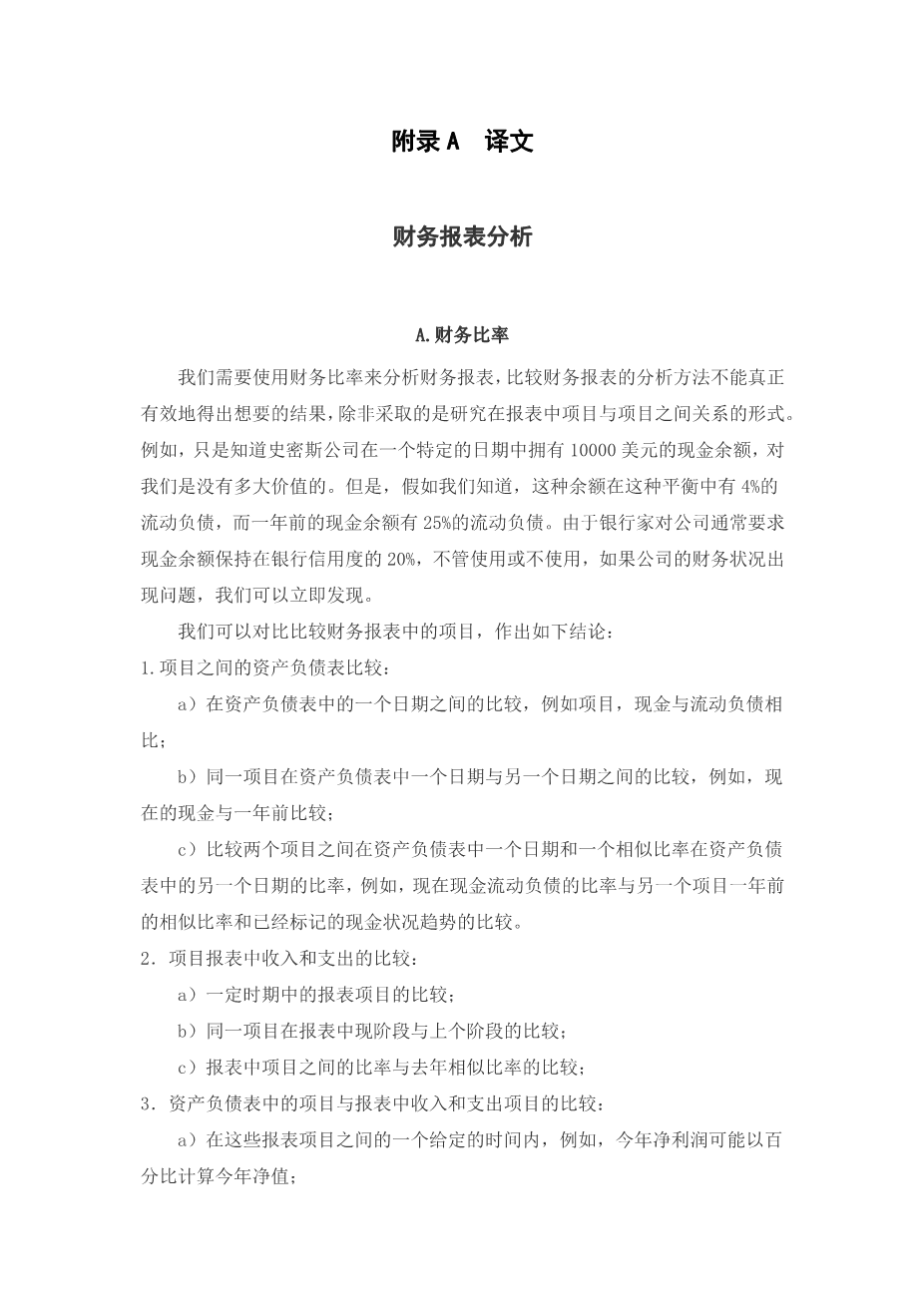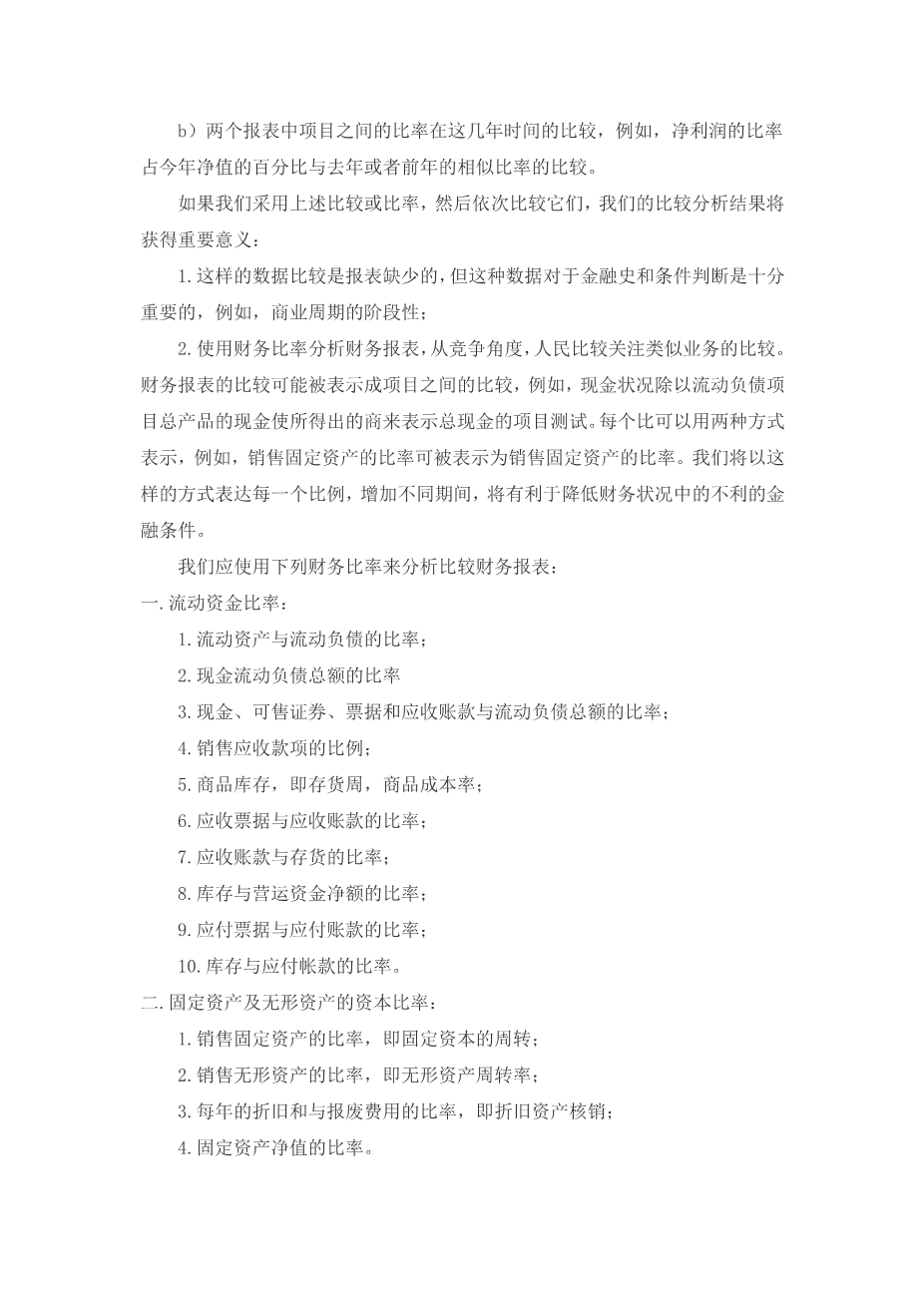Analysis of Financial Statements
- The Financial Ratios
We need to use financial ratios in analyzing financial statements. The analysis of comparative financial statements cannot be made really effective unless it takes the form of a study of relationships between items in the statements. It is of little value, for example, to know that, on a given date, the Smith Company has a cash balance of $1oooo. But suppose we know that this balance is only -IV per cent of all current liabilities whereas a year ago cash was 25 per cent of all current liabilities. Since the bankers for the company usually require a cash balance against bank lines, used or unused, of 20 cent, we can see at once that the firm's cash condition is exhibiting a questionable tendency.
We may make comparisons between items in statements as follows:
1. Between items in the comparative balance sheet the comparative financial per
a) Between items in the balance sheet for one date, e.g., cash may be compared with current liabilities
b) Between an item in the balance sheet for one date and the same item in the balance sheet for another date, e.g., cash today may be compared with cash a year ago
c) Of ratios, or mathematical proportions, between two items in the balance sheet for one date and a like ratio in the balance sheet for another date, e.g., the ratio of cash to current liabilities today may be compared with a like ratio a year ago and the trend of cash condition noted
2. Between items in the comparative statement of income and expense
a) Between items in the statement for a given period
b) Between one item in this period's statement and the same item in last period's statement
c) Of ratios between items in this period's statement and similar ratios in last period's statement
3. Between items in the comparative statement of income and expense balance sheet and items in the comparative
a) Between items in these statements for a given period, e.g., net profit for this year may be calculated as a percentage of net worth for this year
b) Of ratios between items in the two statements for a period of years, e.g., the ratio of net profit to net worth this year may-be compared with like ratios for last year, and for the years preceding that
Our comparative analysis will gain in significance if we take the foregoing comparisons or ratios and; in turn, compare them with:
I. Such data as are absent from the comparative statements but are of importance in judging a concern's financial history and condition, for example, the stage of the business cycle
2. Similar ratios derived from analysis of the comparative statements of or of concerns in similar lines of business What financial competing concerns ratios are used in analyzing financial statements.- Comparative analysis of comparative financial statements may be expressed by mathematical ratios between the items compared, for example, a concern's cash position may be tested by dividing the item of cash by the total of current liability items and using the quotient to express the result of the test. Each ratio may be expressed in two ways, for example, the ratio of sales to fixed assets may be expressed as the ratio of fixed assets to sales. We shall express each ratio in such a way that increases from period to period will be favorable and decreases unfavorable to financial condition.
We shall use the following financial ratios in analyzing comparative financial statements:
I. Working-capital ratios
1. The ratio of current assets to current liabilities
2.The ratio of cash to total current liabilities
3. The ratio of cash, salable securities, notes and accounts receivable to total current liabilities 4. The ratio of sales to receivables, i.e., the turnover of receivables
5. The ratio of cost of goods sold to merchandise inventory, i.e., the turnover of inventory
6. The ratio of accounts receivable to notes receivable
7. The ratio of receivables to inventory
8. The ratio of net working capital to inventory
9. The ratio of notes payable to accounts payable
I0. The ratio of inventory to accounts payable
II. Fixed and intangible capital ratios
1.The ratio of sales to fixed assets, i.e., the turnover of fixed capital
2.The ratio of sales to intangible assets, i.e., the turnover of intangibles
3. The ratio of annual depreciation and obsolescence charges to the assets against which depreciation is written off
4. The ratio of net worth to fixed assets
III. Capitalization ratios
1. The ratio of net worth to debt.
2. The ratio of capital stock to total capitalization .
3. The ratio of fixed assets to funded debt
IV. Income and expense ratios
1. The ratio of net operating profit to sales
2. The ratio of net operating profit to total capital
3. The ratio of sales to operating costs and expenses
4. The ratio of net profit to sales
5. The ratio of net profit to net worth
6. The ratio of sales to financial expenses
7. The ratio of borrowed capital to capital costs
8. The ratio of income on investments
9. The ratio of non-operating income to investments to net operating profit
10.The ratio of net operating profit to non-operating expense
11.The ratio of net profit to capital stock
12.The ratio of net profit reinvested to total net profit available for dividends on common stock
13. The ratio of profit available for interest to interest expenses
This classification of financial ratios is permanent not exhaustive. Other ratios may be used for purposes later indicated. Furthermore, some of the ratios reflect the efficiency with which a business has used its capital while others reflect efficiency in financing capital n
剩余内容已隐藏,支付完成后下载完整资料


英语译文共 6 页,剩余内容已隐藏,支付完成后下载完整资料
资料编号:[485823],资料为PDF文档或Word文档,PDF文档可免费转换为Word


